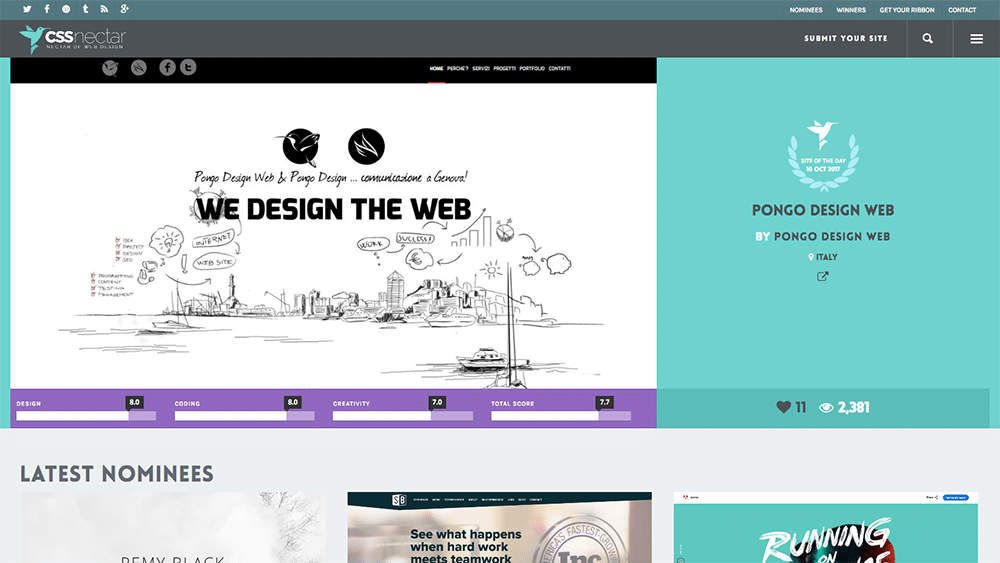How Professional Website Design Helps Build Trust with Your Audience
How Professional Website Design Helps Build Trust with Your Audience
Blog Article
Modern Web Site Layout That Records Focus and Transforms
In an increasingly digital landscape, contemporary site style has actually become an essential element in recording individual focus and driving conversions. By strategically using visual power structure, responsive designs, and involving interactive components, designers can develop experiences that not only draw in site visitors however additionally assist in purposeful interactions. Reliable call-to-action techniques play a vital function in leading users toward wanted results. As we explore these vital components, it ends up being clear that comprehending their interaction can substantially affect a website's performance and customer satisfaction. What are the crucial elements that absolutely make a distinction?
Value of Visual Hierarchy
Aesthetic hierarchy is a crucial aspect in site design, as it overviews individuals' interest and enhances their general experience. By tactically arranging material, designers can direct users to the most essential info initially, consequently increasing involvement and enhancing use.
Including a rational flow in content setup is essential; for example, positioning the most important information on top of a web page promotes instant acknowledgment. Additionally, consistent use typography, such as differing font sizes and designs, helps establish a clear material framework. This company not only help in navigating yet also develops trust, as individuals really feel much more comfortable when they can easily find what they are trying to find.
Ultimately, a well-executed visual pecking order not just enhances visual appeal yet additionally significantly affects user behavior. By prioritizing vital components and making certain a seamless experience, designers can properly convert visitors into customers, strengthening the relevance of this fundamental style concept in modern site development.
Responsive Design for All Instruments
Developing a smooth experience across various gadgets is crucial in today's electronic landscape, where customers access sites from smart devices, desktops, and tablets alike. Responsive style is a critical method that guarantees sites adapt fluidly to different display dimensions, resolutions, and orientations. By using flexible grids, pictures, and CSS media questions, designers can develop designs that maintain aesthetic honesty and functionality, no matter the tool being utilized.
The significance of responsive style prolongs past looks; it directly affects individual involvement and conversion prices. A web site that operates well on all devices motivates longer sees and decreases bounce rates, as users are more probable to interact with web content that is simple to browse. Search engines, particularly Google, prioritize mobile-friendly sites in their positions, making responsive layout an important component of search engine optimization (SEO)
Including responsive layout not only improves individual experience however likewise simplifies the advancement procedure. By developing a solitary website that works throughout devices, organizations can save time and resources contrasted to creating separate mobile and desktop variations. Ultimately, receptive layout is a basic technique for modern website layout, ensuring access and complete satisfaction for all customers, despite their device.
Involving Interactive Elements
While a responsive layout lays the groundwork for a functional site, including engaging interactive components is important for capturing user attention and cultivating much deeper connections. Website Design. Interactive aspects, such Related Site as animations, tests, and clickable infographics, create a more dynamic user experience, urging site visitors to spend more time on the website
Incorporating interactive functions can also direct individuals through complex details, making it simpler to digest content. For example, interactive sliders can show product variations, while ingrained video clips can provide demos or testimonials that reverberate more than static pictures or text. Gamification methods, like benefits for involving or finishing jobs with material, can enhance individual motivation and retention.
Reliable use of interactive elements not just improves the customer experience but can additionally lead to higher conversion prices. It is crucial to stabilize interactivity with performance; extremely intricate attributes might prevent website rate, negatively affecting individual fulfillment.
Streamlined Navigating Practices
Efficient navigation is a foundation of any type of effective web site, as it straight influences user experience and content accessibility. Streamlined navigating techniques ensure that users can conveniently situate information, enhancing their communication with the website. A well-structured navigation menu should be user-friendly and easy, typically including a minimal variety of key groups to stay clear of overwhelming site visitors.
To achieve streamlined navigation, designers should prioritize an ordered framework that realistically arranges material. Implementing breadcrumb trails can provide users with context concerning their current area within the website, permitting smooth backtracking. Additionally, making use of drop-down menus can effectively save room while still providing access to subcategories.
Responsive layout is crucial, as navigating ought to be practical across all tools (Website Design). Mobile users, specifically, advantage from touch-friendly menus and retractable sections that maintain usability without compromising aesthetics

Effective Call-to-Action Strategies
A well-crafted call-to-action (CTA) is important for guiding individuals toward preferred results on a website, as it motivates them to engage with content or purchase. To optimize their effectiveness, CTAs need to be clear, compelling, and purposefully put throughout the website.
First, use action-oriented language that connects necessity or value, such as "Begin," "Join read the full info here Currently," or "Insurance claim Your Price cut." This language not only inspires individuals but likewise establishes clear assumptions about the next steps.
2nd, consider layout aspects; CTAs must stick out aesthetically with contrasting shades, ample whitespace, and famous positioning. A switch that is simple to see and click boosts the likelihood of user interaction.
In addition, individualizing CTAs based upon individual habits or demographics can considerably improve engagement. Customized messages resonate much more with customers, driving greater conversion prices.

Verdict
In verdict, modern-day website design highlights the assimilation of aesthetic power structure, responsive formats, engaging interactive aspects, structured navigating, and effective call-to-action methods. These elements jointly enhance user experience, guaranteeing that site visitors remain involved and inspired to check out content additionally. By prioritizing these design concepts, businesses can significantly improve individual retention and conversion rates, ultimately causing better success in the digital landscape. The continual development of website design underscores its important function in effective on-line interaction and marketing.
In a progressively electronic landscape, contemporary internet site design has actually arised as a crucial aspect in catching user interest and driving conversions.Aesthetic pecking order is a crucial component in site layout, as it guides users' interest and enhances their total experience.The value of responsive style expands past aesthetic appeals; it her explanation directly impacts user engagement and conversion rates.Integrating responsive style not just enhances individual experience but likewise enhances the advancement procedure. Ultimately, receptive design is a basic method for modern internet site style, ensuring accessibility and complete satisfaction for all individuals, no matter of their gadget.
Report this page